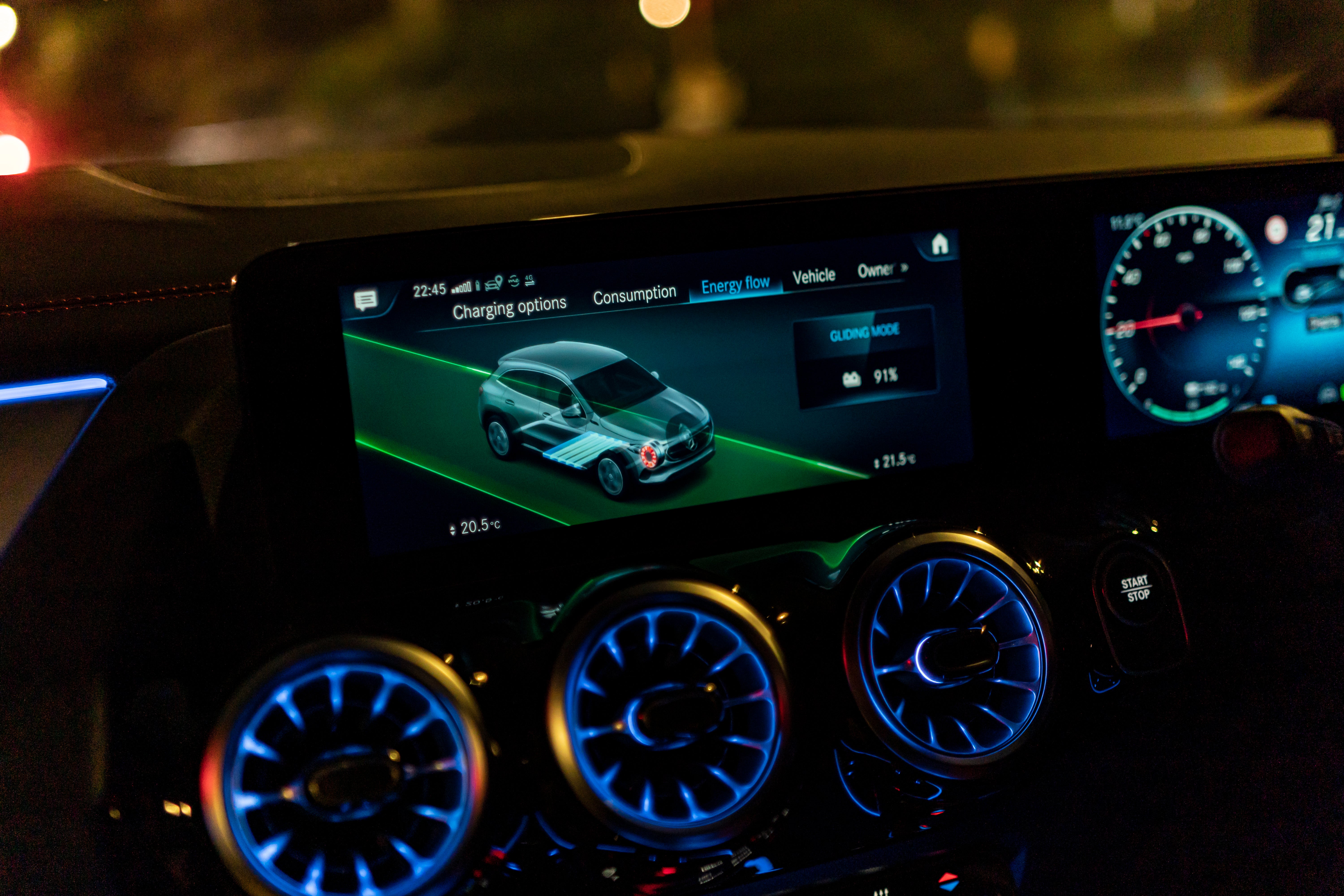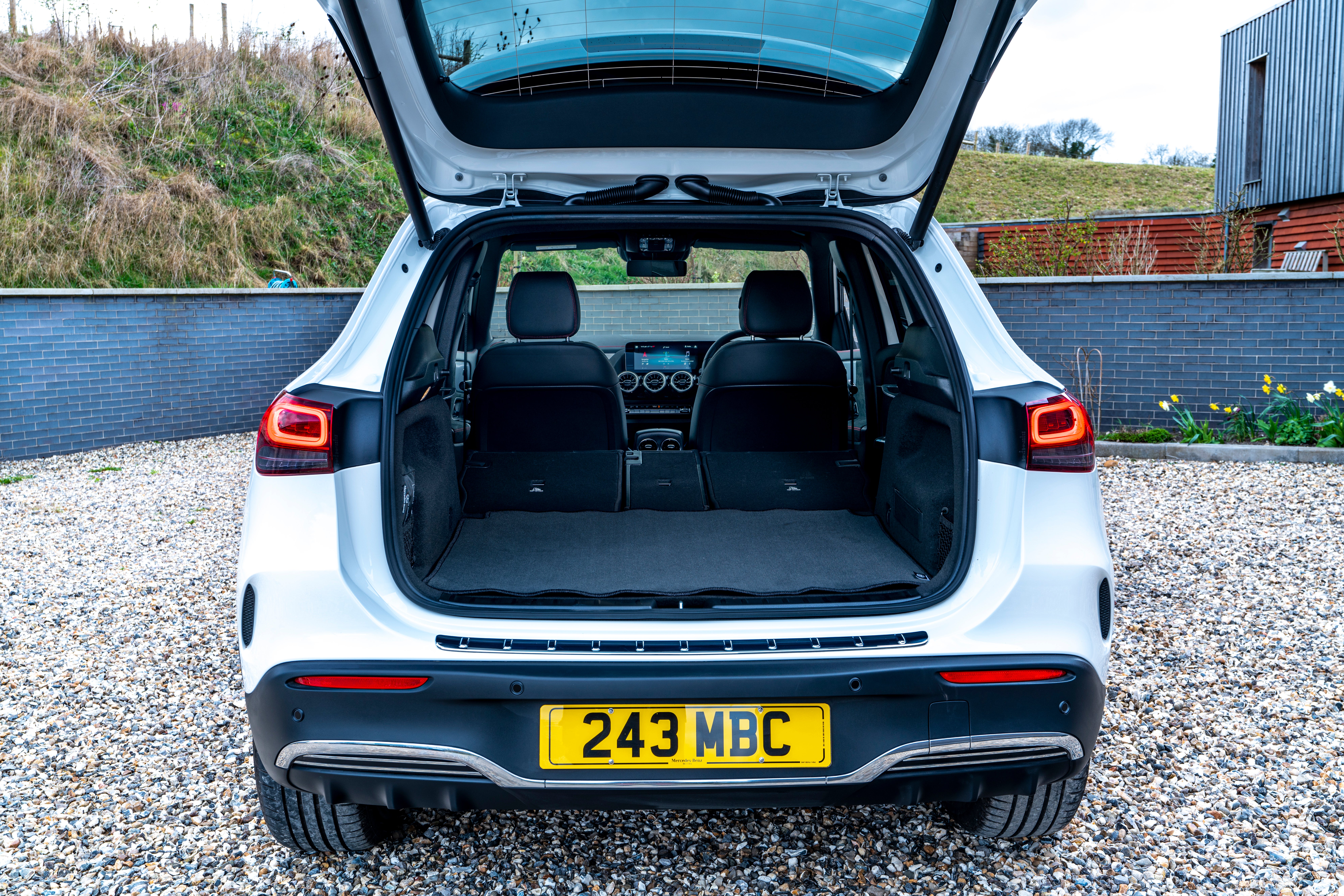
If the remarkable success of the little Mercedes-Benz A-Class is anything to go by, the company’s new small electric vehicle will soon become a familiar sight on our roads. It’s got the right badge, of course – for some buyers the only acceptable one – it’s electric, it’s a small SUV, and it’s got the same inoffensive styling as its siblings, the A-Class and GLA, a fossil-fuel counterpart to the EQA (“EQ” is Mercedes-Benz’ electric sub-brand). But does the EQA deserve to succeed?
Yes and no. As a package, it works pretty well, but it is compromised by having to share much of its platform and some mechanicals with its petrol-engined stablemates. As a result it is pretty hefty – well over two tonnes, including a substantial battery and twin electric motors. Lugging that lot around means it’s more limited in range than its frankly better, more advanced Korean counterparts, the Hyundai Ioniq 5 and Kia EV6. If you’re not bothered about snob value or the particular sense of style that Mercedes-Benz brings to its cars, you may as well take one of the more spacious models from the Korean brands.
THE SPEC
Mercedes-Benz EQA
Price: £54,085 (as tested; range starts at £44,495 inc grant)
Power: Twin electric motors, all-wheel drive powered by 66.5kWh battery
Power (up): 190
Top speed: 99mph
0-60mph: 8.9 secs
Fuel economy: 132mpg equiv
Range: 200 miles
CO2 emissions: 0
The EQA drives very well, and was assured round corners, thanks to its grip aided by a twin-electric motor system sending drive to all four wheels and, with its under-floor battery, a low centre of gravity. It’s certainly refined and comfortable, well-equipped, right up to a system that will plan a long journey taking into account the most efficient way to recharge the vehicle.

The cabin is the typical, slightly exuberant Mercedes environment – big screens along the dash, plenty of chrome, piano-black and soft leather lifting the mood. The heads-up display, where speed, satnav and key data are projected onto the windscreen and a nice full-length glass roof completes your sense of well-being.
You can vary your EQA driving settings to sporty or economy, which will have a noticeable effect on range (as will the outside temperature). But it’s not a purpose-built design, and it’s not quite state-of-the-art. Maybe for that reason, and also because it’s a battery car, it takes a little longer to get warm in there.

As for downsides, I disliked the thumb-pad controls on the steering wheel – the right place to put them, but far too fiddly and thus distracting on the move. There’s a sort of mouse pad between the front seats, which is even trickier to use, while the radio is controlled by a roller on the steering wheel, which is of little use to passengers. I also had a moment when the car refused to release the electric parking; I had to turn it off and on again a few times before I was free, rather like being in charge of a desk top computer on wheels. Charge times, by the way, are pretty standard – five hours overnight at home from a dedicated socket, or about half an hour at a public fast-charging station.
The EQA is a welcome addition to the expanding range of electric vehicles on the market. Its closest rival is probably the BMW iX3 and Volvo XC40 Recharge, though they are even more expensive than the Mercedes-Benz EQA, which starts at about £44,000. That, though is the real barrier to electric car ownership for so many people – its shocking cost.







